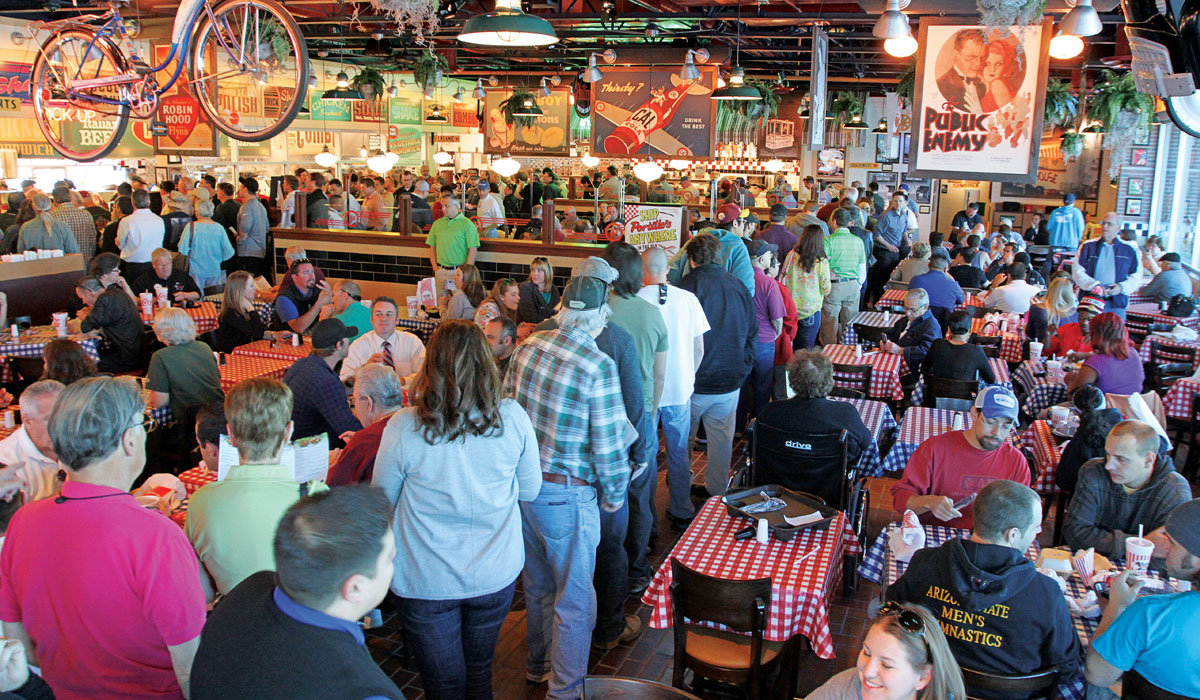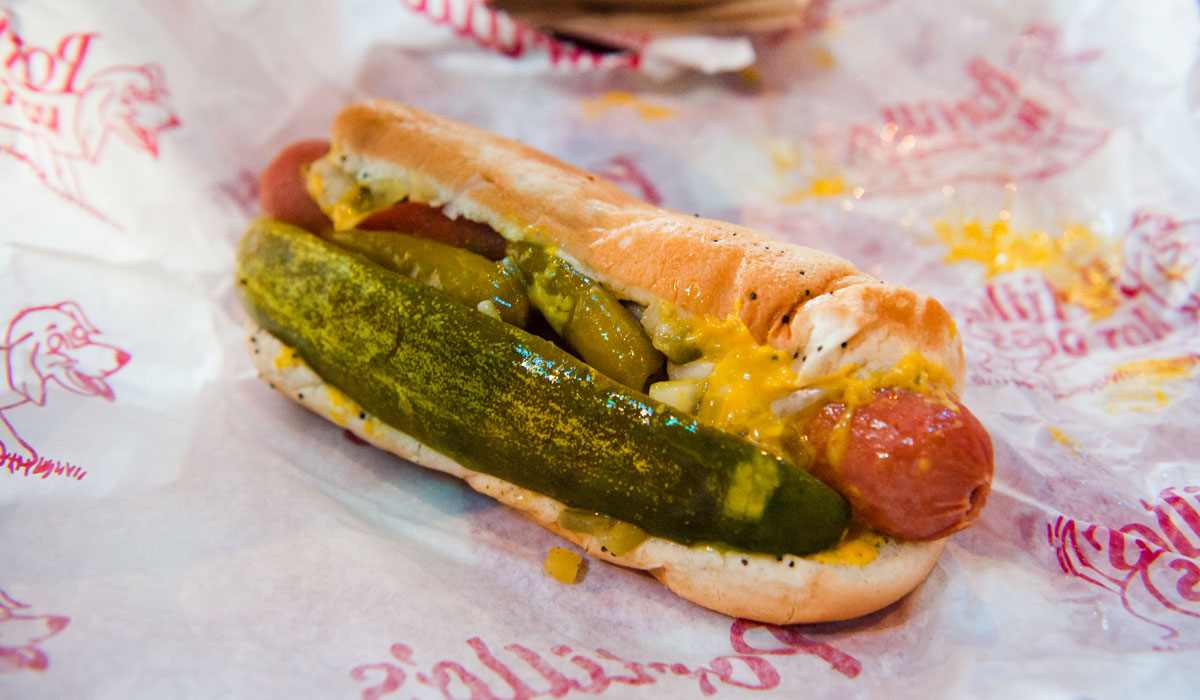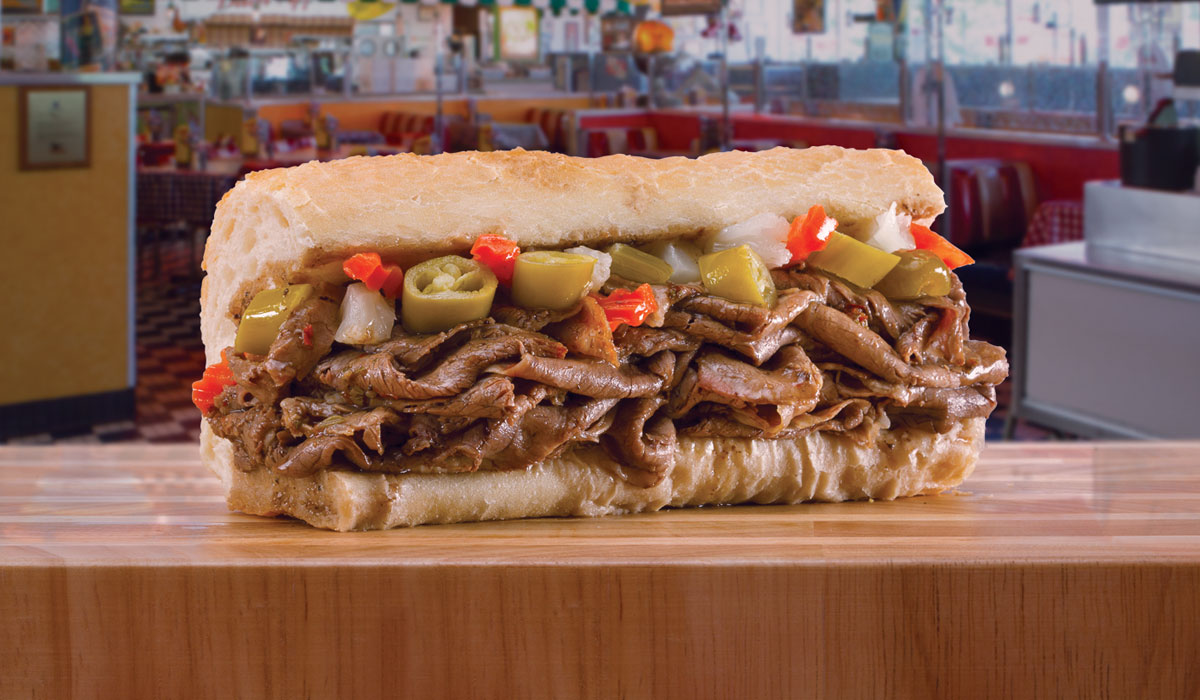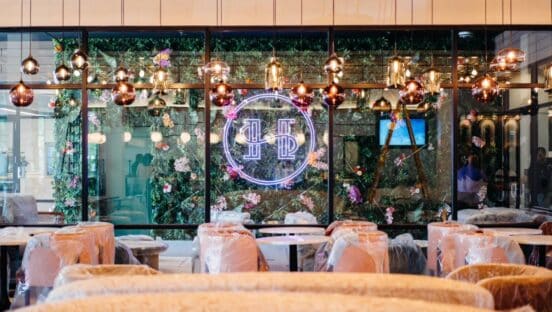Stop a longtime Chicagoan on the street and ask him or her where the nearest Portillo’s restaurant sits, and the likely reply will not only include directions to the nearest eatery, but also suggestions of a few menu items to try.
Portillo’s is, after all, a Windy City treasure, a brick-and-mortar ballad to many things Chicagoans hold dear, namely hot dogs and Italian beef. And its origin is a testament to the city’s by-the-bootstraps, blue-collar ethos. The company is so beloved, in fact, that even when founder Dick Portillo sold his eponymous restaurant chain to Boston-based Berkshire Partners in 2014, Portillo’s average unit volume hovered north of $8 million and included a downtown Chicago location that tallied a whopping $17 million in annual sales.
“And that’s without a single parking spot,” says Portillo, who recently released an autobiography titled Out of the Dog House.
QSR sat down with the 79-year-old Portillo to discuss his fast-casual chain’s rise, its deep connections to Chicago, the keys to its success, and his decision to sell the business after decades of resisting overtures.
The secret sauce
In 1963, Portillo took the $1,100 he and his high-school-sweetheart-turned-wife, Sharon, had earmarked for their first home and instead purchased a 6-by-12-foot trailer. With no previous restaurant experience, Portillo opened a hot dog stand called The Dog House in Villa Park, a middle-class suburb located 20 miles west of downtown Chicago.
“I’m a hot dog lover, and Villa Park didn’t have anything,” he says.
Portillo set up The Dog House on a busy thoroughfare in the shadow of two large discount stores. But within weeks of opening, business was so slow that Portillo’s wife suggested the couple look for an exit strategy.
[float_image image=”https://www.qsrmagazine.com/wp-content/uploads/2019/11/DP.jpg” width=”50″ link=”” caption=”Portillo says he knew nothing about owning a business, food costs, or suppliers when he opened The Dog House.” alt=”” align=”left” /]
Portillo confesses he knew nothing about owning a business, food costs, or suppliers when he opened The Dog House. He even struggled to properly cook a hot dog. To learn, he visited some of Chicago’s most revered hot dog spots to see where they purchased their supplies and to observe their operations firsthand.
The business slowly blossomed, and The Dog House—renamed Portillo’s in 1967—earned a steady following. By the early 1970s, Portillo had opened multiple locations and realized he had something special.
“The lines kept getting longer, our sales doubled each year, and I got more secure in my thoughts,” he says.
Inspired by his time in the U.S. Marine Corps, Portillo adopted four core principles for his restaurants: quality, service, attitude, and cleanliness.
Those four elements—combined with offering guests an experience, which Portillo defines as good food, fast lines, and a pleasant sensory environment—remain Portillo’s secret sauce.
A fun operation
Portillo says fear was his fuel in the early days. It’s what compelled him to be cautious and careful, yet creative and compassionate.
“I started with $1,100 and a hot dog cart,” he says. “I was up against people who had a lot more money, so I had to think differently.”
Early on, Portillo’s menu embraced the Chicago staples: Vienna Beef hot dogs, Italian sausages, Polish sausages, and Italian beef. Over time, the menu expanded to include chicken, fish, salads, and a prized chocolate cake developed by Portillo’s daughter-in-law, Gina.
“There are more margins in some of these other items, and that keeps the bottom line solid,” he says. “Plus, I think our guests appreciate that they can go to Portillo’s seven days a week and never repeat a meal.”
Portillo’s eateries, no two of which look alike, reflect Portillo’s love of history, particularly Chicago history, and include memorabilia from the 1920s through 1960s.

Portillo’s didn’t unveil its first drive thru until 1983 with the opening of its seventh restaurant. That idea came after Portillo observed a woman in a shopping-center parking lot near his Downers Grove, Illinois, unit struggling to bring two children and groceries to her car. “I knew the woman wouldn’t want to load the car, drive to our store, and unload her children to eat lunch,” he says. “That’s when I realized we needed a drive-thru lane.”
But the company resisted the typical drive-thru arrangement. Numerous staff members man a Portillo’s drive thru, including some positioned as far as 100 yards away from the building taking orders and collecting payment.
Over the years, Portillo’s has done very little advertising, and the chain rarely discounts.
“We spend money on training, because the best advertising is one neighbor telling another how great Portillo’s is,” Portillo says.
He’s long prioritized getting into the dining room of his restaurants to study the customer experience. During one such visit, Portillo stood at the pickup counter and watched one customer after another gather their order when called. Staff were pleasant and organized, but the area lacked energy. That led him to create some snappy one-liners, like “Number 22, this is for you!” and “Number 68, don’t be late!” That simple move enlivened pickups. “We’re a fun operation,” he says, “but in a professional way.”
The dark zone
For years, Portillo’s had been shipping its products across the U.S. and maintained detailed order records. That data, combined with a hefty number of Chicago-area transplants in Southern California, inspired Portillo to launch his first unit outside the greater Chicagoland area in Buena Park, California, in 2006. “I was absolutely nervous taking the concept 2,000 miles away,” he says. “I knew the Chicago transplants would like it, but would their neighbors?”
Portillo invested approximately $6 million into opening the Buena Park unit. That sum included transporting and housing dozens of Chicago employees in California to ensure a smooth opening.
To generate early buzz, Portillo’s invited its Southern California mail-order customers to the store’s grand opening. Portillo also visited local beauty shops and real estate offices with invitations to the opening event. About 2,000 people showed up, including busloads of Marines from nearby Camp Pendleton.

“We wanted to get people to understand what we were all about, and we could only do that by utilizing ambassadors,” Portillo says.
Despite the California unit’s early success, Portillo remained skittish about how his uniquely Chicago concept might resonate far beyond the Windy City. He recalls a customer approaching him inside the dining room of the Buena Park location and asking him if the Italian beef came from an Italian cow. “That’s how foreign this was to some people. In business, though, I believe you must take risks and go into the dark zone, the unknown,” he says. “If you do what everyone else is doing, then you can expect the same results.”
Following its California success, Portillo’s strategically opened outposts in other areas with strong brand awareness. When it expanded to Scottsdale, Arizona, in 2013, the restaurant recorded $438,000 during its first six days of business.
Today, Portillo’s has two units in Southern California, three in Arizona, two in Florida, five in Indiana, one in Iowa, three in Minnesota, and three in Wisconsin. “It’s been scary at times, but I’ve focused on surrounding myself with the right people and drilling on training,” Portillo says.
A “billion-dollar fairy tale”
Portillo calls the complexity of Portillo’s business his “moat.” The extensive menu, the labor-intensive operation, and the company’s unrelenting focus on training have been key to holding off competitors and protecting the company’s long-term profits.
“A lot of guys try to simplify things, to take the path of least resistance, but we’ve accepted complexity as our point of differentiation,” he says.
Portillo claims there was never a moment in which he or the company was content, adding that he consistently championed teamwork, organization, and training as the company matured. “That’s what has made Portillo’s what it is and what’s allowed us to get thousands of employees moving in the same direction,” he says.
[float_image image=”https://www.qsrmagazine.com/wp-content/uploads/2019/11/DPBW.jpg” width=”50″ link=”” caption=”When word got out in 2013 that Portillo was finally open to exploring a sale after five decades at the helm, 24 private-equity groups prepared bids.” alt=”” align=”left” /]
He doesn’t hesitate to call employees the foundation of Portillo’s success. The typical Portillo’s restaurant has 150–200 employees on its roster and upward of 60 people on a shift. And Portillo worked to treat them well. As boss, he gifted a Caribbean cruise to any employee who reached a 20-year work anniversary. “It’s the people who are trained well that make the whole combination successful,” he says.
As his brand’s acclaim grew, Portillo received hundreds of franchising inquiries each year. He declined every one. “I thought [franchising] would dilute the standards I set, and I liked the fact that I owned 100 percent,” he says. “There were no committees, and I could move swiftly when I needed to, which was important as we were growing.”
Portillo also regularly declined overtures to sell. “The business kept getting better and growing, so I felt the worth would grow accordingly. I placed a bet on myself.”
When word got out in 2013 that Portillo was finally open to exploring a sale after five decades at the helm, 24 private-equity groups prepared bids. Portillo personally reviewed each bid before accepting Berkshire’s reported $1 billion offer.
“I liked that Berkshire had no restaurants in their portfolio, and I felt they understood our culture,” he says. “It takes time and effort to do our restaurants right, and you can’t let the real estate get ahead of the training department.”
Portillo, now a consultant for Berkshire, describes his story as “a billion-dollar fairy tale.” The son of immigrants from Mexico and Greece, he recalls struggling in school and toiling in more than a dozen odd jobs upon returning to Chicago from his time in the Marines. He unloaded box cars and worked in a junkyard, seemingly destined for a career of unsteady work and unskilled labor.
“I wouldn’t believe it myself if I hadn’t lived it,” he says.




